EmailTooltester is supported by readers like yourself. We may earn a commission when you purchase through our links. Of course, this won't increase the cost for you.
I had very little social media presence when I started running online courses.
My main platform was the Freelance Magic blog and I used that to funnel people to my email list—just FYI, I’m so glad I did this. Today, I have an email list of almost 6,000 people where I promote my courses and build relationships with potential students.
The great thing about email is you land directly in your audience’s inbox—there’s no better way to show up and stand out. You don’t have to rely on the whims of changing algorithms or flash-in-the-pan trends that last all of two weeks.
Instead, email quickly becomes a valuable asset for attracting, nurturing, and retaining course students.
So, if you’re constantly battling with the latest Instagram updates or spending way too much time sucking up to Google, I highly recommend using email marketing to promote your courses.
Benefits of email marketing for online courses
For me, email marketing is a less intense way to share my courses with people that doesn’t involve me being online and “present” every single day.
Here’s why it’s my favorite way to promote my courses:
- It’s easy to promote new course programs, ebooks, and other offers to subscribers.
- You can send notifications or reminders (even automated ones) to course participants about new unlocked modules, homework, group calls, or anything else that you’d like to communicate automatically. It’s a great way to offer additional value that doesn’t fit into the course program (this is excellent for nurturing students and growing your authority).
- You can share video recordings of live calls or webinars from your course to help students stay accountable.
- You can share (and track!) links in your emails to see who’s interested in your courses.
- You’re not reliant on any algorithms—you’ll show up in your audience’s inboxes, no questions asked.

There are also plenty of big-picture marketing benefits. Email lets you cross-sell your courses, bundle products, and build credibility. I also use it to ask for student reviews and testimonials that I can add to course landing pages and sales sequences.
Email campaign ideas for online course creators
I started out with a very bare-bones email marketing strategy. Today, I have a ton of automated sequences, ranging from a course welcome series to upsell sequences that promote other, relevant courses.
A welcome series for new sign-ups
When someone joins one of my courses, I send an automated welcome email introducing them to the course and telling them how they can get in touch. This is also a great time to show new students how to navigate the course or any specific “housekeeping” things they need to know.
My first welcome email also includes a discount on a handful of my other courses—I like to strike while the iron’s hot!
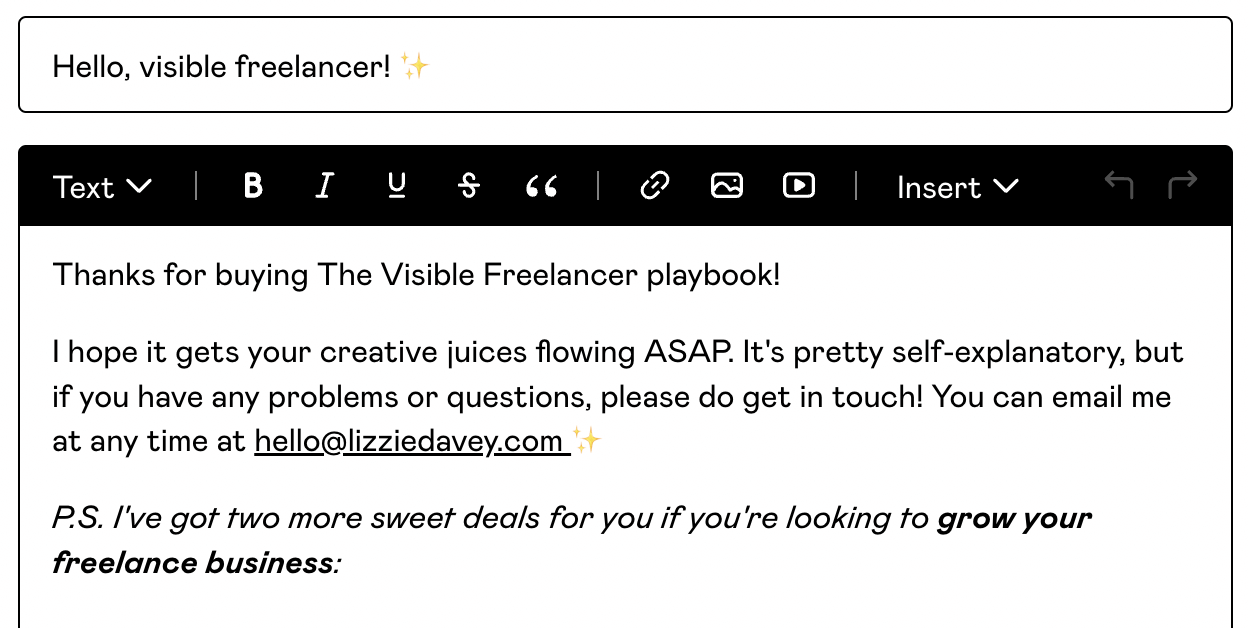
Progress reports and student check-ins
Accountability is hard, especially when students aren’t actually sitting in a real-life classroom. Email marketing lets you check in with them every so often, whether it’s to remind them to keep going or to show them how far they’ve come.
You can send well-timed emails to go out:
- When students complete a module
- When students haven’t logged in for a while
- When students reach a milestone
- Weekly, biweekly, or monthly to share student progress
Re-engagement emails when someone doesn’t complete a course
Completion rates in online courses are notoriously low. They can be as low as 5%, but usually average out at around 13%. It’s not great.
You can use email to recapture student attention, either by reminding them they still have modules to work through or by sweetening the deal with a little offer if they come back.
Jacob Monash uses an automated Mailchimp sequence to send a reminder to students who haven’t completed the course after a certain number of weeks. Those who have completed it receive an upsell email.
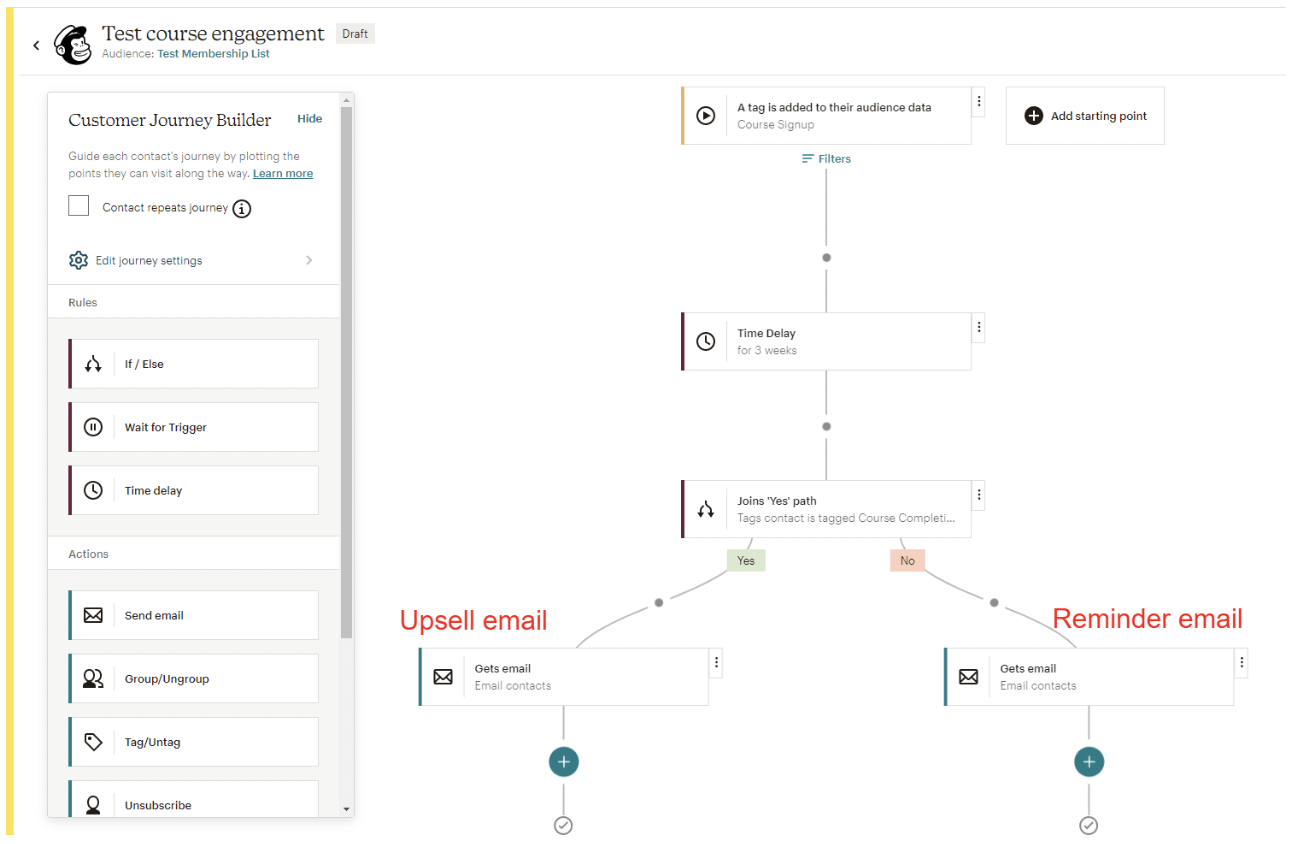
Promo emails to suggest other courses
My online courses form an ecosystem, where each one teaches students a specific freelancing skill. When someone buys a course, I send an email suggesting a relevant complementary course.
For example, I promote Pitch & Prosper to people who have bought my course about creating better content.
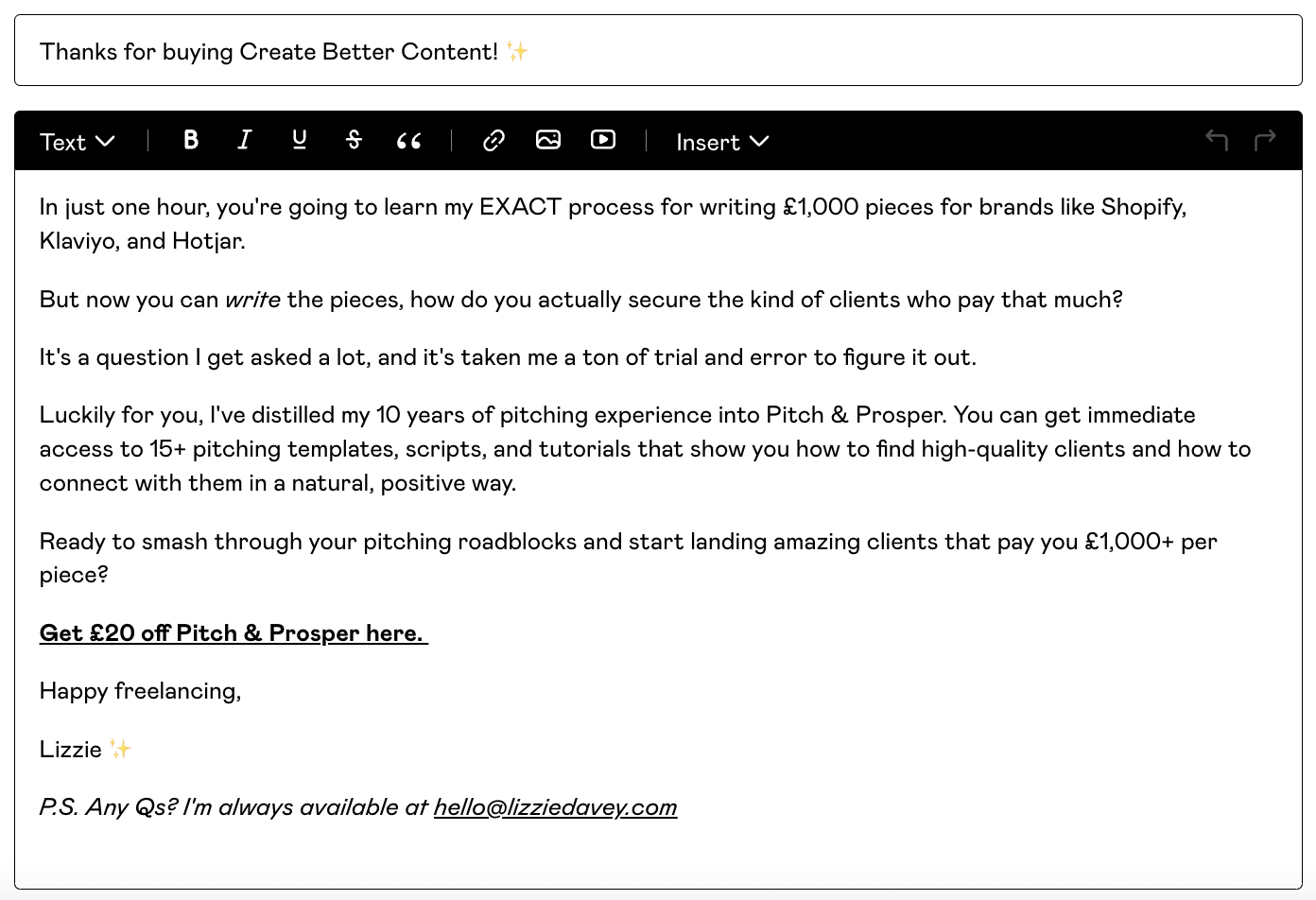
New course announcements
Email is the very first place I announce a new course—my subscribers are the most important people, so they get first dibs on any new products I create.
I sent this email to my list to announce the launch of The Promo Playbook.
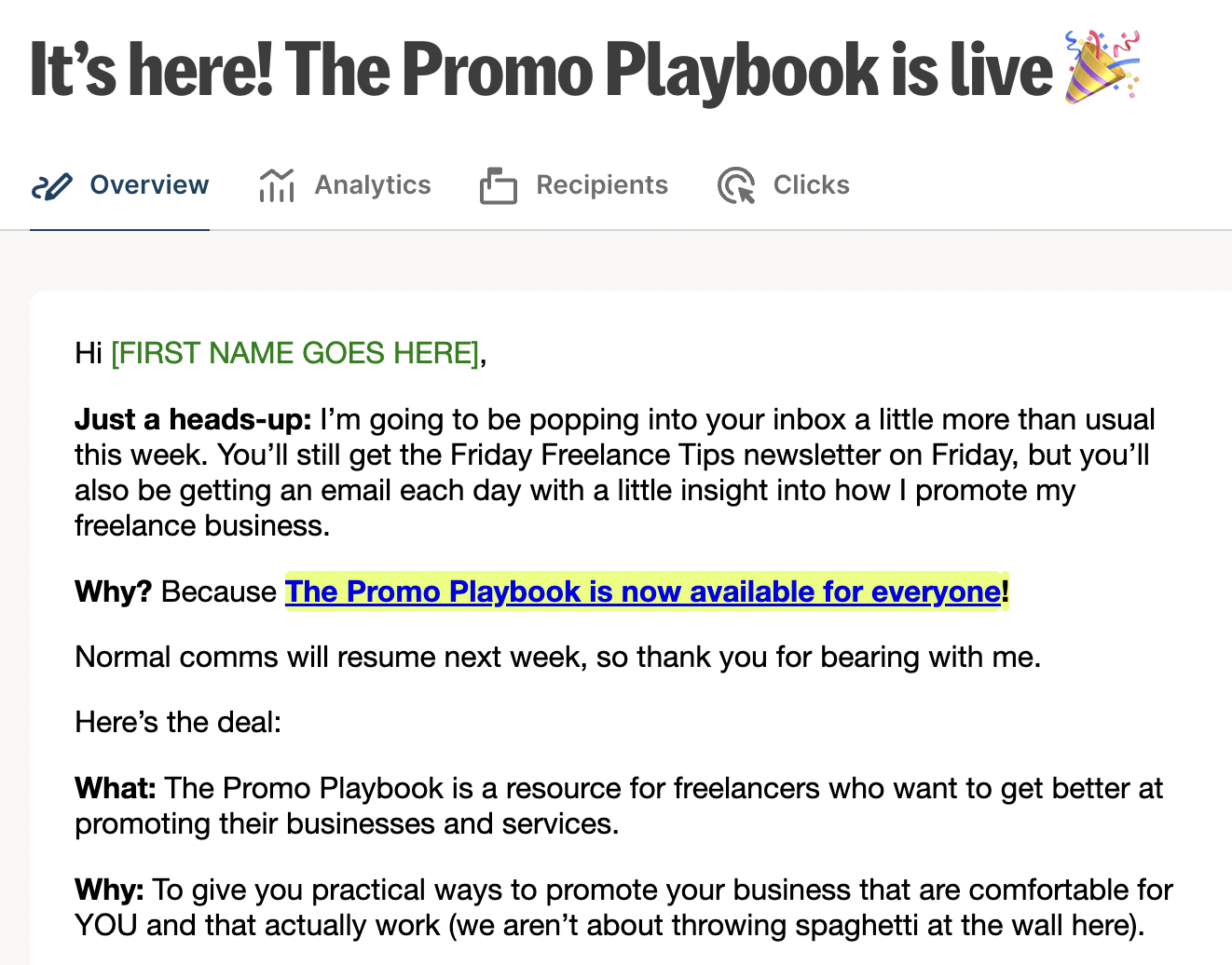
Best email marketing platforms for course creators
These days, there are a huge number of email marketing platforms, many of which offer additional course creation features. Here are some of the best options.
All-in-one tools
These platforms combine both email marketing features and course creation tools.
GetResponse
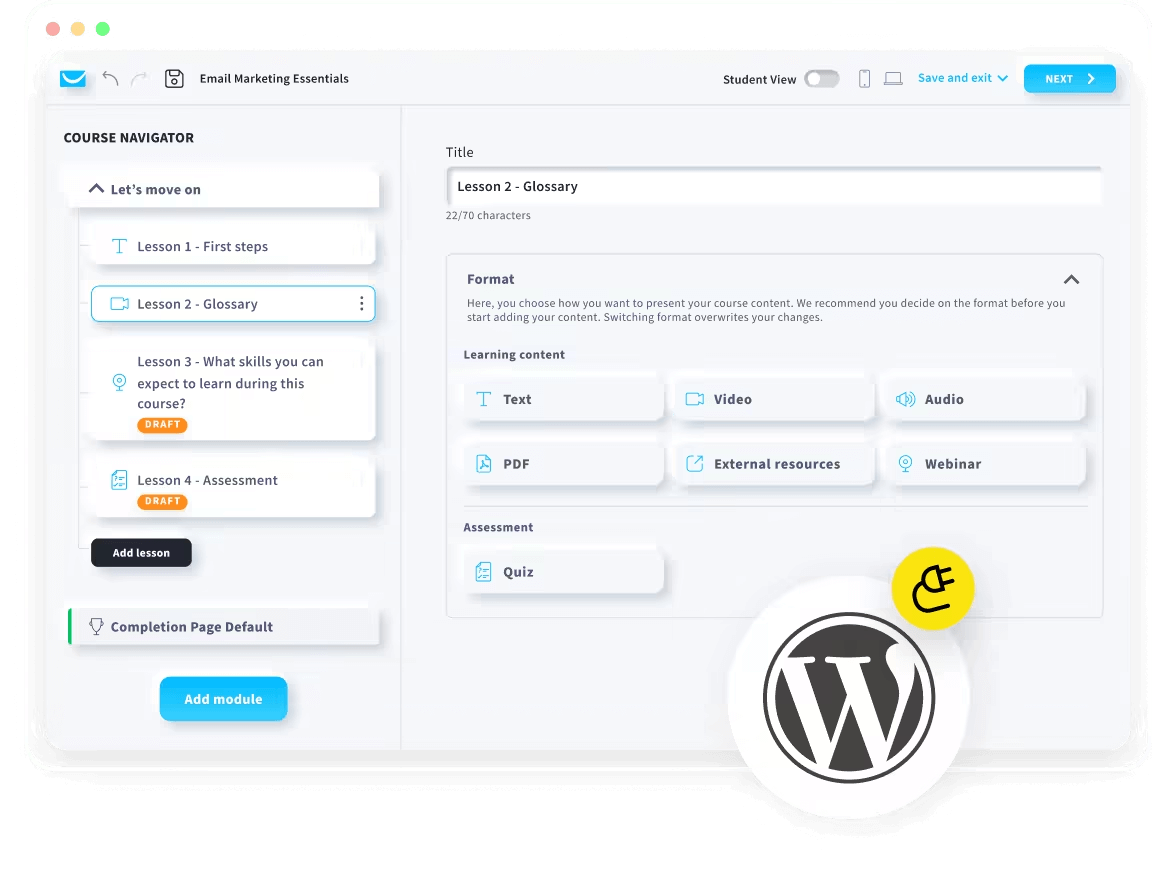
GetResponse has recently expanded to include a course creation tool so you can now manage your email marketing and run your courses from a single dashboard.
As well as its existing email marketing features, like automations, segmentations, and workflows, it now has an AI-powered creator that builds courses in minutes, interactive course quizzes, and certificates.
Pros:
- Built-in course creator for a single view of your courses and emails
- The tool is intuitive and easy to use
- The Conversion Funnel feature lets you create multiple sales funnels and landing pages for different courses
- Flexible pricing for course creators of all levels, with prices starting at around $48/month for 1,000 contacts
Cons:
- The landing page design capabilities can feel quite limited
- Doesn’t contain all the bells and whistles in terms of available features
- Email automations only available on higher-tier plans
- The customer support can sometimes feel clunky
Best for: creators who want to bring their courses and email marketing into one platform.
Read our review of GetResponse or get started here.
Podia
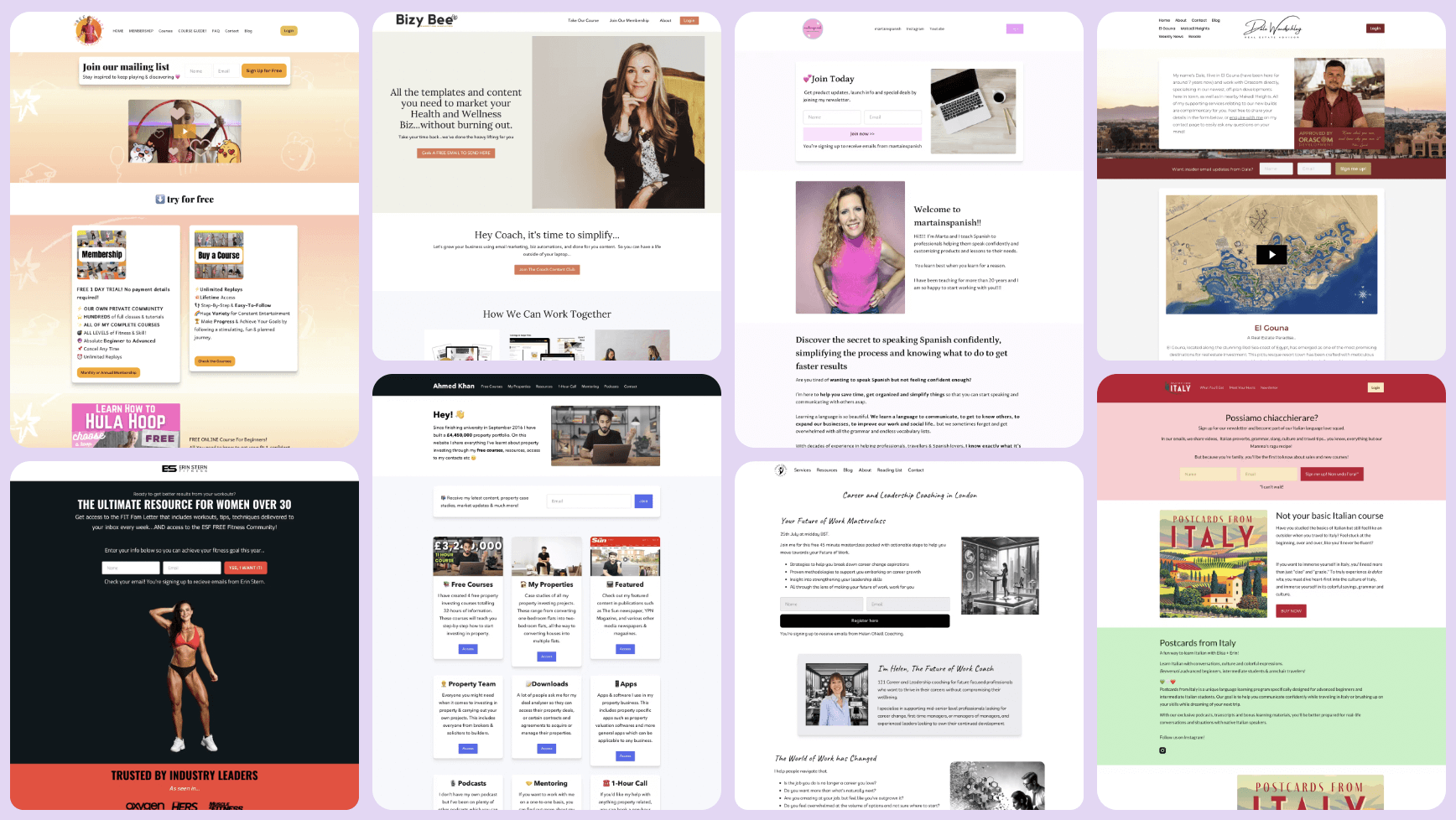
Like GetResponse, Podia also has built-in course creation and email features so you can manage everything from one place. This is particularly handy if you’re running a few courses that each have multiple email automations.
Podia’s user interface is renowned for being simple and intuitive, but it also has powerful features that let you create, sell, and promote your courses without juggling too many tools.
Pros:
- Clean, easy-to-use interface
- Sell unlimited courses and products without extra fees
- Built-in community features
- Plenty of segmentation options to group your contacts based on different criteria
- Affordable prices starting at $33/month
Cons:
- Email automations aren’t as advanced as other platforms as it was first and foremost a course creation platform
- The free trial is limited to 10 students and charges a $1 plus 10% transaction fee for every purchase
- There is no free plan available, just a 30-day trial period
Best for: creators who want to sell a diverse library of products, like memberships, courses, and digital downloads.
Kajabi
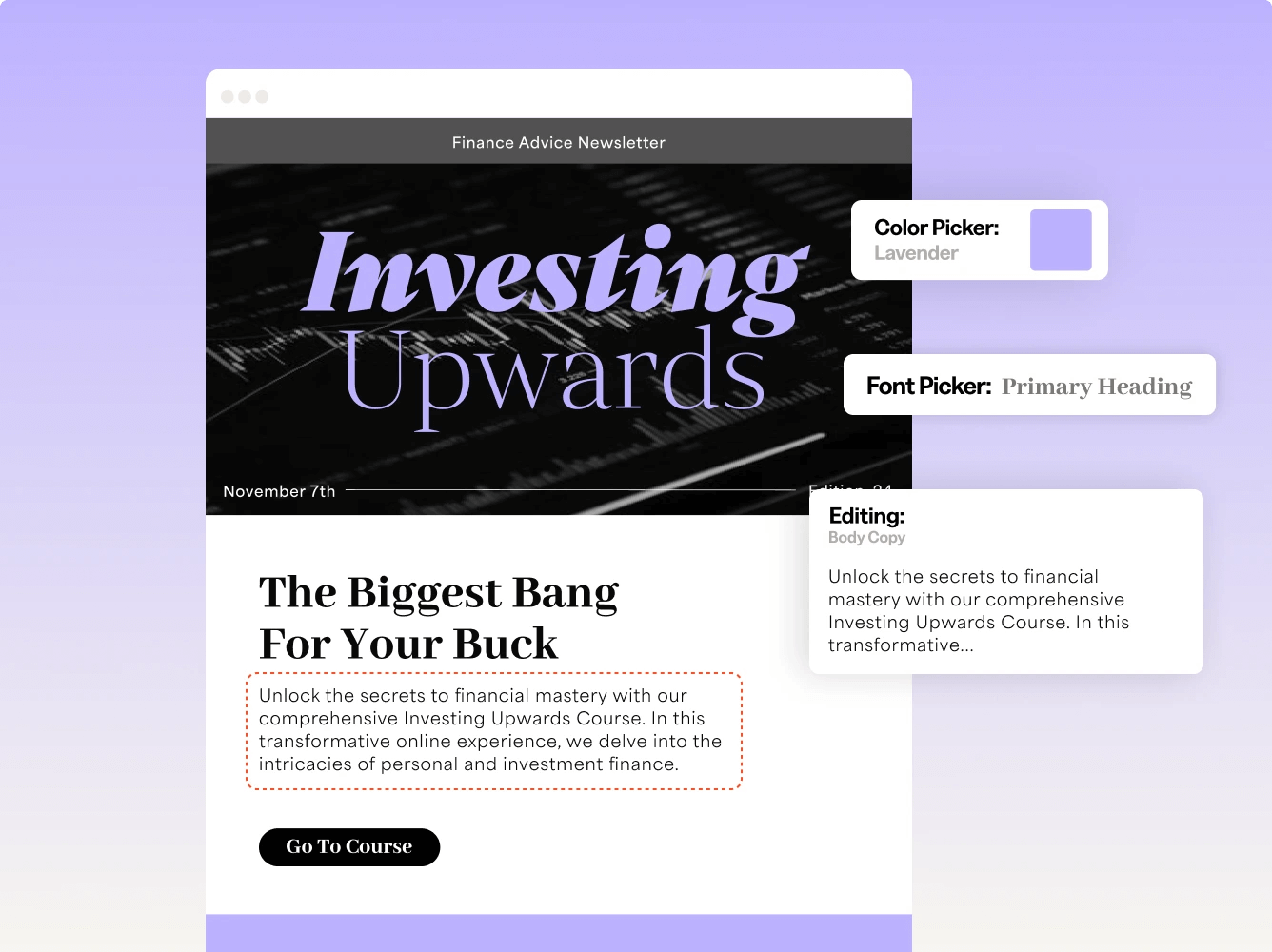
Kajabi was one of the very first course creation platforms I ever came across and it’s still up there today as one of the most popular. This is primarily thanks to its ability to create slick courses and pre-built “pipelines” that automate your entire sales funnel.
There’s a real mix of course creation features, like quizzes and surveys, as well as core capabilities you’d associate with email marketing platforms—things like powerful automations and subscriber segmentation.
Pros:
- Build out pipelines that automate course promotions and sales
- An assessment feature that helps students learn
- Detailed analytics to see how engaged each student is
Cons:
- The price tag is pretty steep compared to other platforms (starting at around $150/month)
- There’s a pretty intense learning curve when you first start
- Their blogging features are surprisingly basic for such a premium platform
Best for: established course creators who are already making money and need a robust system to scale up.
Thinkific
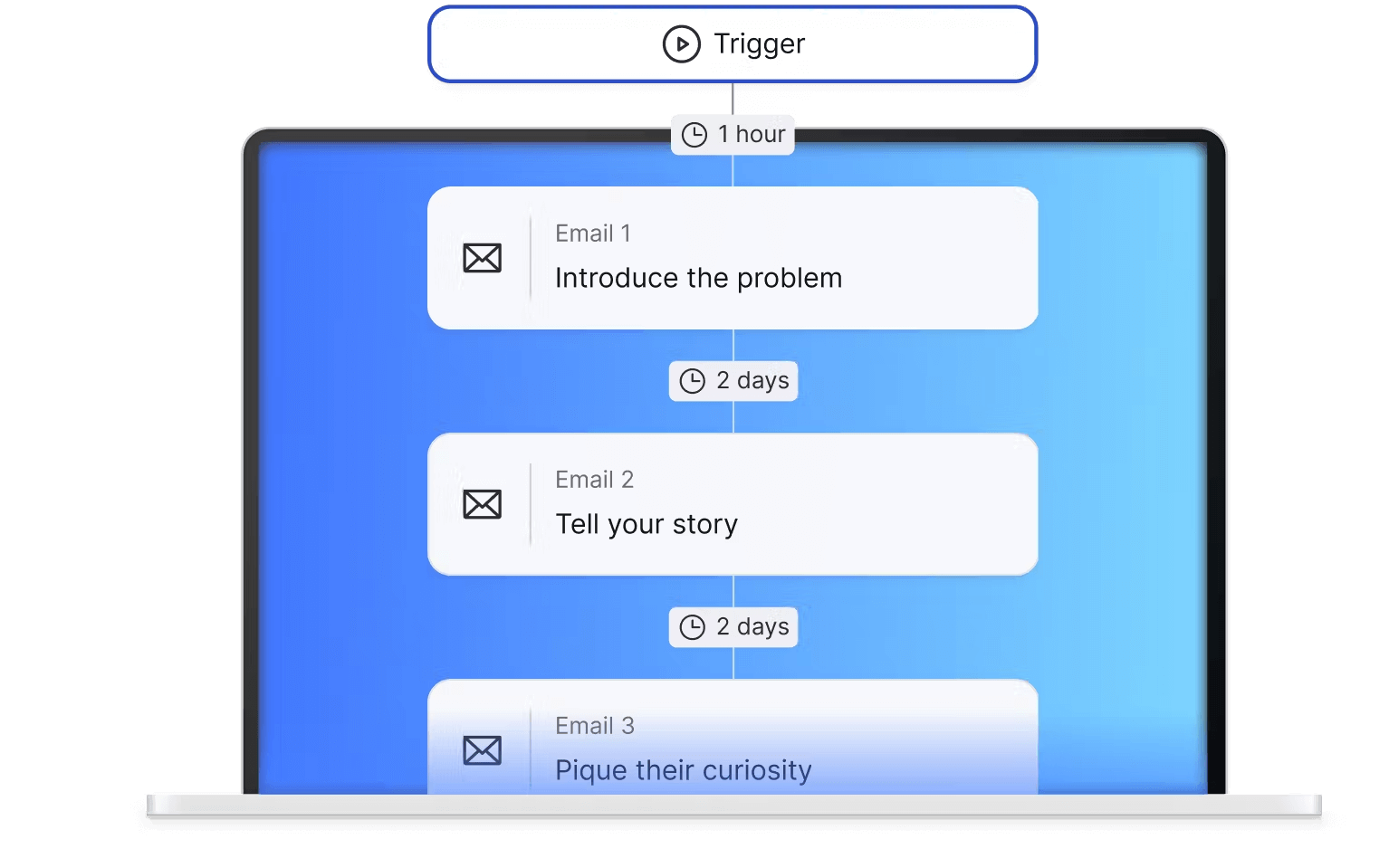
Thinkific takes a different approach to some of the all-in-one platforms—it's really focused on being an amazing course platform first, with some marketing tools built in to help you sell.
What makes it stand out is how flexible it is with course design. You can build anything from a simple video course to a full-blown training program with certificates, quizzes, and different learning paths. There are also extra features like a community builder, webinar tool and booking tool designed for coaches.
Pros:
- Professional materials, like automatically generated completion certificates
- The bulk upload feature is handy if you’re working with lots of content
- There’s a great free plan if you’re just starting out (even ecommerce is included)
- Intuitive interface and drag-and-drop builder
Cons:
- The built-in email marketing is pretty basic (you’ll probably need to connect another tool for serious email campaigns)
- The checkout process is kind of rigid compared to other platforms
- The theme options are fairly limited
Best for: course creators who care more about delivering a solid learning experience than fancy marketing automation.
Kit
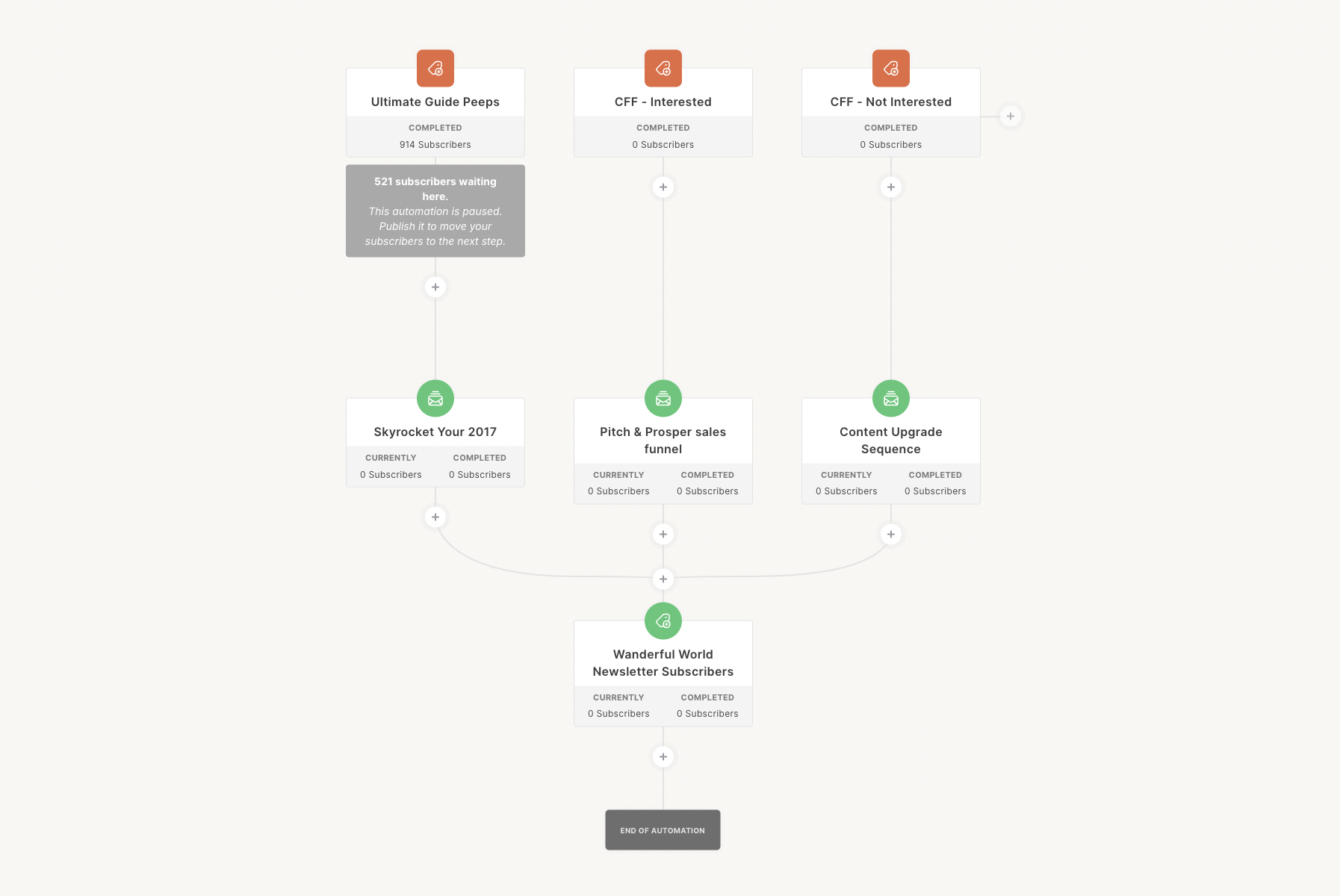
Kit isn’t technically a course creation platform, but you can sell products and memberships through it. I use it to create launch sequences and automated flows for my students because I can integrate it with other course creation platforms, like Gumroad and Teachable.
What I like most about Kit is its emphasis on community building—that, for me, is the basis of a successful online course business, and it has a wealth of tools to enable that, including its Creator Network, automated workflows, and the ability to create an in-platform creator profile.
Pros:
- The ability to hyper-segment and tag your audience
- Visual automation builder that lets you create complex launch sequences
- Community-building elements for nurturing new and existing students
- Generous free plan and affordable paid plans starting at $25/month
Cons:
- There are no real comprehensive course-creation features
- Limited design options for emails
- Can get pricey as your list grows
Best for: course creators who prioritize email list growth and engagement while selling courses or products without needing a complex course management system.
Read our review of Kit or get started for free.
Email marketing only
These platforms are primarily email marketing platforms, but they’re equipped with a handful of useful features for course creators.
Flodesk
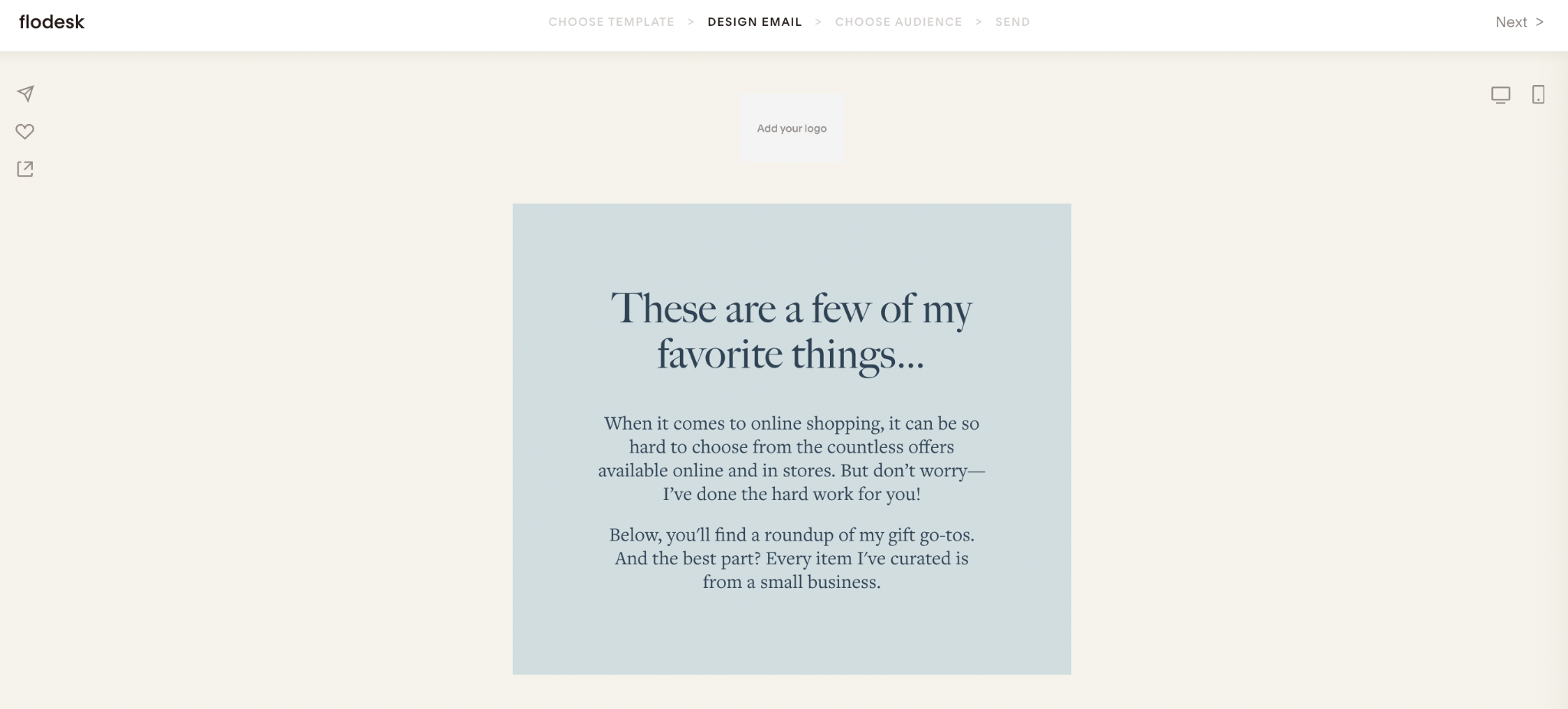
Flodesk is best known for its beautiful designs and visually striking emails. You can send simple, aesthetic emails to students and subscribers, but it’s also recently ventured into the course creation world.
The new Flodesk Checkout addition lets you sell courses directly through the platform, create stunning course sales pages, and give students instant access to course content.
Pros:
- Stunning email templates
- Flat-rate pricing, no matter how big your list gets, including unlimited emails and subscribers
- The Checkout feature simplifies selling digital products
Cons:
- Lacks automation features
- Far fewer integrations than other platforms
- No in-depth analytics
- No free plan available
Best for: course creators focused on design-driven marketing and looking for a simple, stylish way to sell their courses without a ton of complex features.
Read our review of Flodesk or get started for free.
ActiveCampaign
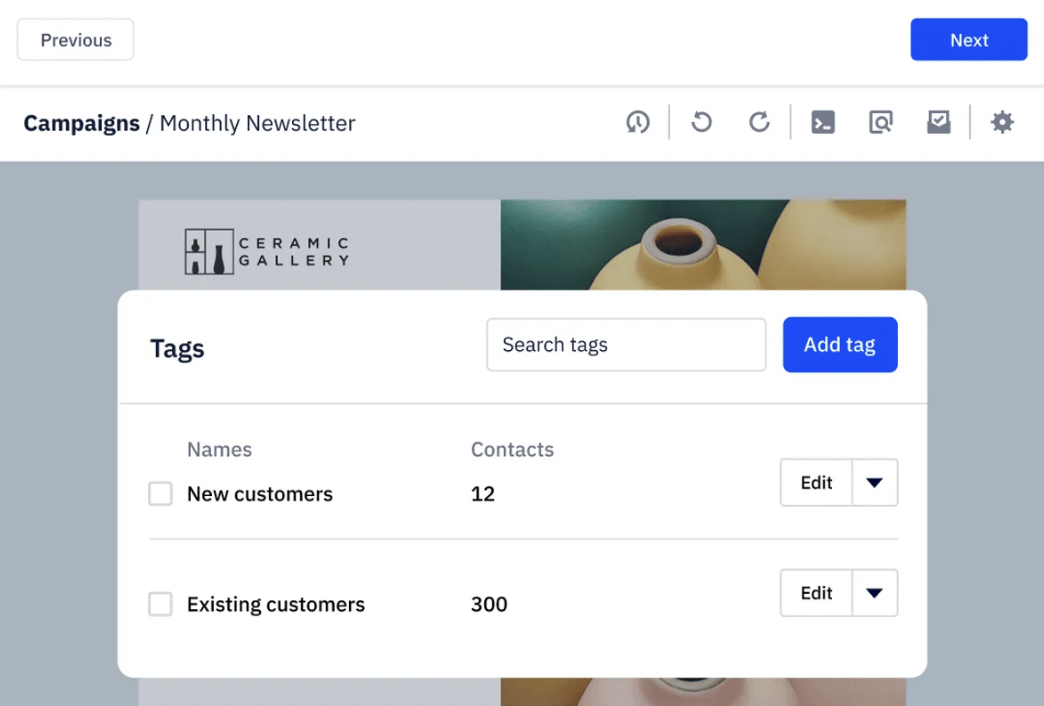
ActiveCampaign brings extensive email marketing features together with tons of integrations with e-learning platforms, including Thinkific, Kajabi, and Teachable (you can do this through Zapier or direct integrations). This lets you sync up student data and behavior across your email campaigns to deliver personalized automations.
Pros:
- Visual automation builder to build out complex student journeys
- A robust CRM that keeps track of every student interaction
- Powerful split-testing feature for easy experimentation
Cons:
- There’s definitely a learning curve involved in mastering all its features
- The interface can feel overwhelming with a lot of options and menus
- Pricing can jump up pretty quickly as your list grows, starting at $49/month for the Plus plan
- There’s only a 14-day free trial available
Best for: established course creators who are serious about email marketing and want deep insights into their students’ behavior.
Read our review of ActiveCampaign or get started for free.
MailerLite
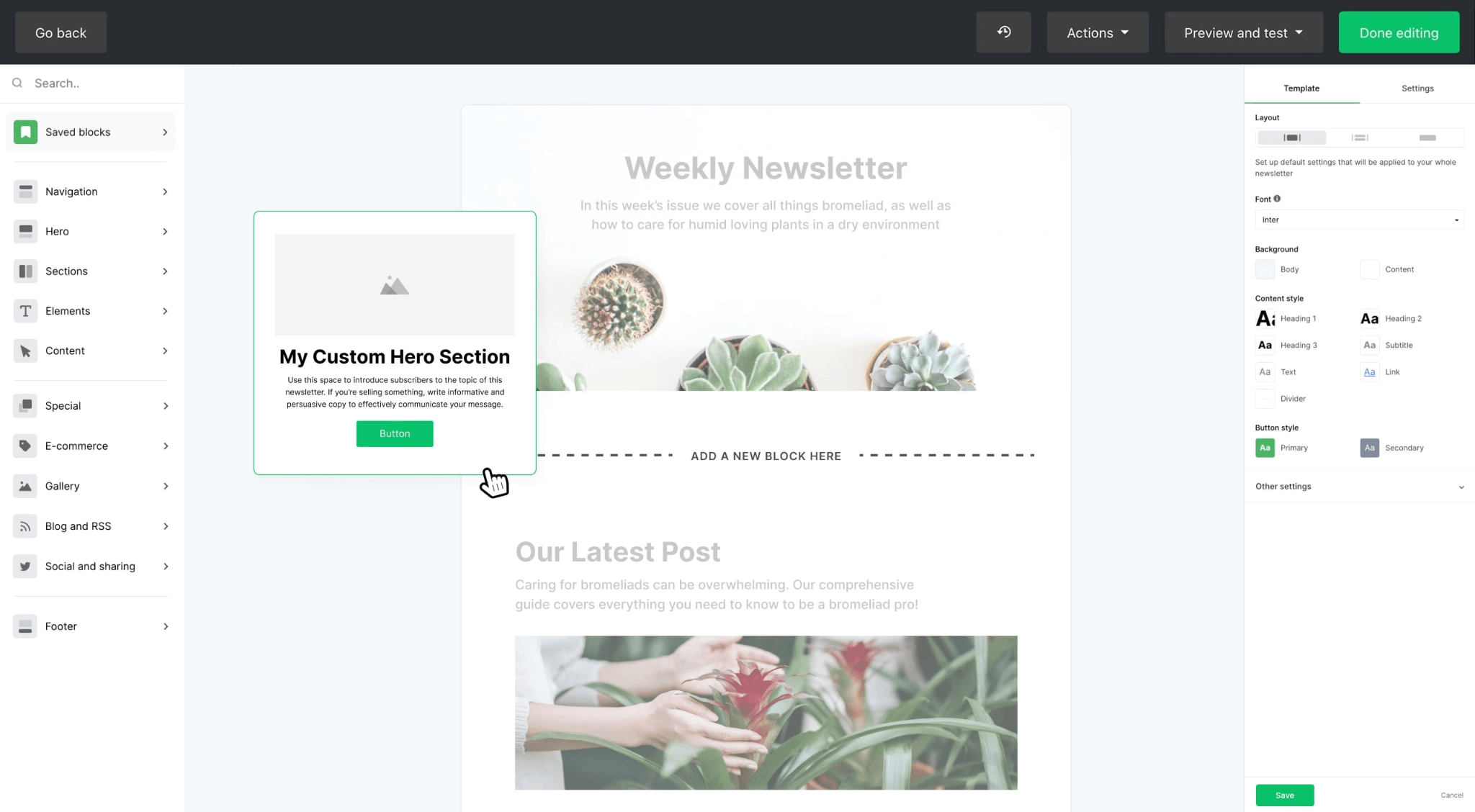
MailerLite is a good option if you’re working with a tight budget. It starts for free for up to 1,000 subscribers and even its paid plans are super reasonable (we’re talking $10/month for 500 subscribers). It also integrates with most course platforms through Zapier so you can automate student comms.
Pros:
- An easy-to-use drag-and-drop email builder
- The automation builder is surprisingly powerful for the price point, with prices starting at $9/month
- A landing page builder at no extra cost
Cons:
- Segmentation isn’t as sophisticated as pricier platforms
- Reporting and analytics can feel pretty limited
- The automation builder starts to feel a bit clunky when building out particularly complex workflows
Best for: course creators who are just starting out or running a lean operation.
Read our review of MailerLite or get started for free.
Website builders with course creation and email marketing tools
If you've built your course website on platforms like Squarespace or Wix, you might not need a separate email marketing tool at all.
These platforms actually come with their own email marketing features baked right in. Squarespace, for instance, offers sleek email templates and automation tools, while Wix has built-in analytics and an intuitive drag-and-drop email builder.
Email Marketing best practices
- Segment your audience. Tailor your emails based on where your subscribers are in the customer journey—whether they’re leads, current students, or past customers. Learn more about audience segmentation.
- Automate welcome sequences. Set up an automated email series to onboard new students and nurture leads with valuable content.
- Use compelling subject lines. Capture attention with clear, concise subject lines that spark curiosity and encourage people to open your emails. Use our subject line tester.
- Personalize your emails. Address your subscribers by name and customize content based on their preferences. Discover how to personalize your campaigns.
- Optimize for mobile. Make sure your emails are mobile-friendly so your course updates and promotions look great on any device.
- Track performance metrics. Regularly analyze open rates, click-through rates, and conversions to tweak your strategy. Learn more about tracking email marketing success.
- Send valuable content consistently. Offer free resources (like ebooks or checklists), course tips, or exclusive updates to keep your audience engaged and invested in your offerings.
Conclusion
When I say investing in email marketing for the course side of my business was the best decision I could have made, I really mean it. Not only does it give you direct access to your audience without relying on unpredictable algorithms, but it also helps you build meaningful relationships with your students, promote your courses, and drive sales.
Any questions or comments? Feel free to drop them in the comment section below!
And if you’re up for more related content, check out our article on email courses here.
We keep our content up to date
20 Jan 2025 - Added prices
Our Methodology
This article has been written and researched following our EmailTooltester methodology.
Our Methodology
